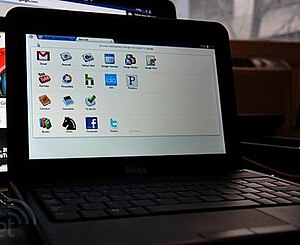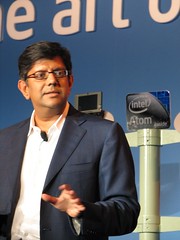The craze started at the release of iPhone1 in June 2007. I remember watching the live stream on Mogulus, predecesor to livestream.com, it was filmed and broadcast by Max Haost, founder of livestream.com and they were extremely hilarious in the way they would actually make fun of the people standing in line. I find this unbelievably hilarious, it’s the extreme example of the gadget-craze (out-of-control gadget consumerism?)

The ipad 2 line in Houston, TX as reported by Engadget.
Blame the analysts, unless they see lines, they think Apple isn’t selling any products.
This launch was engineered to generate lines (no pre-orders, 3 week waits if ordered on line…) and lots of free publicity…
Comment by Ghostbear1 in that Engadget article.
the scarcity principle is the mother of all marketing techniques (…) We generally perceive that things that are difficult to get are typically better than things that are easily available. If everyone wants it then it must be good right? This actually taps into the principle called social proof
Source: salescrunch.com
Queuing up for a piece of gadget is a really weird concept. In theory, especially for Apple, those devices are mass produced in gigantic proportions in the biggest Chinese factories, somehow Apple would not be able to manufacture enough to sell to whomever would want one?
This whole lining up deal is a situation designed by Apple’s viral marketing department.
This carefully choreographed gadget marketing/pricing ballet has turned Apple into the second largest company in the world, just 3 and a half years after the release of the iPhone. It’s really insane if you think about it. If not for the largest oil company in the world Exxon Mobile, Apple would be the largest company in the world, and most of Apple’s current profits and revenues come from their ARM Powered iOS devices, especially the iPhone.
So now Apple is doing a big push on the tablet market with iPad. And the iPad2 certainly has a nice Dual-core ARM Cortex-A9 processor in there.

There are Android tablets like Archos 101 Internet Tablet released 6 months ago, that are lighter at 480gr vs 600gr, that have real mini-HDMI outputs built-in, real USB-host built-in, a real kick-stand built-in, and that still support more video and audio codecs (such as all DivX, MKV found on BitTorrents), with Flash support, real multi-tasking for 40% to 60% cheaper price than the ipad2.
In my opinion, Honeycomb is the first real Tablet OS. And I am pretty sure Honeycomb tablets will overtake iPad market share in less than a year, faster than Android overtook iPhone after the Nexus One release.
For some engineering resource/time allocation/prioritisation issues, Google chose not to allow much to happen with tablets with Donut, Eclair, Froyo and Gingerbread. Companies like Archos were left with the open source part of Android, doing the customizations they want, but for some strategic reason, they were left without the full support from Google. Google didn’t want Android Powered iPad and iPod Touch competitors to dominate the market in 2010. They thought they perhaps were busy enough dominating smartphone growth of that year, and gaining the full support by two dozen Smartphone makers in the process.
I think Google’s strategy is to simply let the Apple viral marketing people do their thing first, then get their better open and free software in gear, and riding on Apple’s viral marketing coat-tails, Google’s Android ecosystem can then provide the big push and rapidly dominate.
This is also a dance of technological disruption, and disruption of those disruptors. Google can’t be seen as encouraging the industrys too rapid change, while some companies bet their futures on the Open Handset Alliance, Google had to be careful and let the market move as fast as it can without hurting the feelings of the big partners who invest billions of dollars in this and want to see their investments safely recouped.
In any ways, look forward to the Android Honeycomb ecosystem taking care of making Android the top platform for tablets fast, and look forward to new designs to make tablets even more fun, more productive, and basically turn these gadgets into the user interface of the future of mobile computing for all the people of the world.















